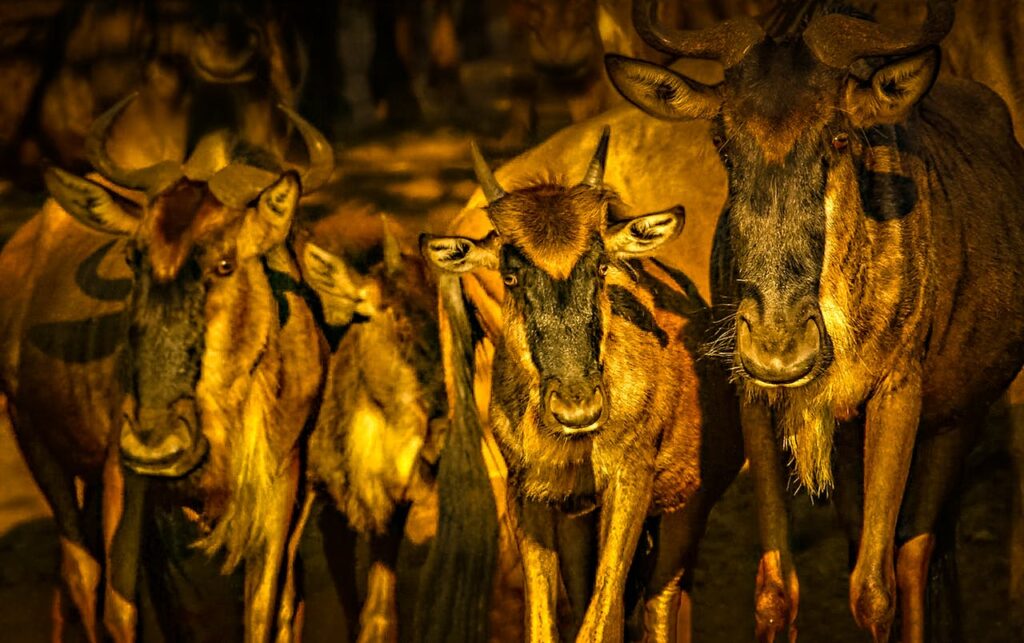Yes, February is an outstanding month for a Masai Mara safari, offering some of the most consistent wildlife sightings, ideal weather conditions, and fewer crowds compared to peak migration months. According to MasaiMara.ke’s Safari Experience Score, February earns an impressive 8 out of 10, making it one of the top-rated months for a safari experience. While it doesn’t feature the dramatic Great Migration river crossings seen in July and August, February compensates with excellent predator activity, exceptional weather, and competitive off-peak rates. If you’re looking for a safari that balances great game viewing, budget-friendly prices, and fewer tourist crowds, February might be the perfect time to explore the Masai Mara.
1. February Weather in Masai Mara: Perfect for Safari
February is part of the short dry season in Masai Mara, creating ideal conditions for game drives.
- Temperature: Daytime highs range from 26°C to 28°C (79°F to 82°F), with cool mornings and evenings around 12°C to 14°C (54°F to 57°F)—perfect for early morning safaris and sundowner drives.
- Rainfall: Minimal rainfall, though brief, occasional showers may occur. The landscape retains some greenery from the November–December short rains, but water sources are limited, making wildlife sightings more concentrated around rivers and waterholes.
- Humidity: Low, creating comfortable conditions for outdoor activities and reducing insect activity compared to wetter months.
The combination of clear skies, mild temperatures, and dry conditions ensures fantastic visibility for both wildlife spotting and photography.
2. Wildlife in February: Predator Paradise and Calving Season
February is often called the “predator’s month” in Masai Mara due to the abundance of prey and heightened predator activity.
- Big Cats: Lions, leopards, and cheetahs are highly active, especially as they take advantage of the wildebeest calving season happening in the southern Serengeti, just across the border. Predators are often seen hunting vulnerable newborns, leading to dramatic wildlife encounters.
- Resident Game: Elephants, giraffes, zebras, buffaloes, hippos, and rhinos are abundant, as they are year-round residents. The dry conditions force animals to gather around permanent water sources, making sightings frequent and predictable.
- Birdlife: While not the peak of the migratory bird season, February still offers excellent birdwatching, with a mix of resident species and some lingering migrants from Europe and Asia.
Forum Insight: “We visited in February, and the predator action was phenomenal. We witnessed multiple lion hunts in one day, and the lack of crowds made it feel like a private safari.”
3. Budget-Friendly Safari: February’s Pricing Advantage
February falls within the shoulder season, which means lower prices compared to the July–October peak migration period, without compromising the safari quality.
- Park Entry Fees:
- Non-residents: $100 per day (compared to $200 during peak season from July to December).
- Kenyan citizens: KES 1,500 per day (versus KES 3,000 in peak months).
- Accommodation Discounts: Many camps and lodges offer competitive rates, often with special deals or packages since February is outside the peak migration rush. You can enjoy luxury stays at mid-range prices.
- Fewer Crowds: While still popular, February doesn’t attract the same volume of tourists as the Great Migration months, giving you peaceful, uncrowded game drives.
Traveler Review: “February gave us the best of both worlds—amazing wildlife sightings and much cheaper rates than July. We had lion cubs playing just meters from our vehicle with no other cars around.”
4. Pros and Cons of Visiting Masai Mara in February
✅ Pros:
- Excellent Predator Sightings: High chances of witnessing hunting scenes and cubs.
- Ideal Weather: Dry, warm days with minimal rain and clear skies.
- Budget-Friendly: Lower park fees and accommodation rates compared to peak season.
- Fewer Tourists: More intimate wildlife encounters without crowded safari vehicles.
- Photographer’s Dream: Perfect lighting conditions with sharp, vibrant landscapes.
⚠️ Cons:
- No Great Migration: The dramatic river crossings happen later in the year (July–October).
- Occasional Showers: Though rare, brief afternoon showers can occur.
- Sparse Greenery: While not as lush as the rainy season, some may find the landscape drier.
5. How February Compares to Other Months
- Versus January (8/10): Similar conditions, but February often has clearer skies and more intense predator activity due to the calving season in nearby Serengeti.
- Versus March (5/10): March marks the onset of the long rains, making February the drier, more reliable safari month.
- Versus June (8/10): Both are excellent, but February offers better prices and fewer crowds, while June marks the start of the migration season with denser wildlife concentrations.
- Versus July (10/10): July features the iconic river crossings and peak wildlife density, but comes with higher costs and crowded sightings. February offers a quieter, more personal safari experience at a fraction of the price.
Final Verdict: Is February Worth It?
Absolutely. February offers a perfect balance of incredible wildlife sightings, ideal weather, budget-friendly rates, and fewer crowds. While it lacks the spectacle of the Great Migration river crossings, it more than compensates with intense predator action, excellent photography conditions, and intimate game drives. For travelers looking to avoid peak-season prices and experience the raw beauty of Masai Mara without the crowds, February is an exceptional choice—earning its strong 8 out of 10 Safari Experience Score from MasaiMara.ke for good reason.

